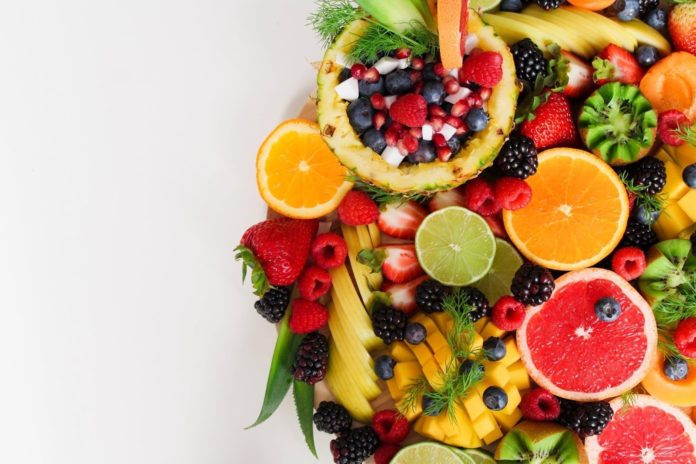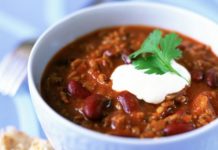Guess what? Oranges aren’t the only food high in Vitamin C! Want to add more of this essential vitamin to your diet? Then check out these seven tasty options!
When you have a cold or aren’t feeling well, do you instantly reach for a glass of orange juice? Most of us do because we know that Vitamin C helps us feel better.
Vitamin C is an essential part of our diet, and many of us assume that oranges are the best way to get it. But there are actually lots of other foods that provide us with high levels of Vitamin C.
If you’re looking to add more vitamin C to your diet, there are seven foods that contain more Vitamin C than oranges.
Why Vitamin C Is Important
Before we get into our Vitamin C food list, let’s take a look at the science. Why is Vitamin C so important for our health?
It helps with the growth and repair of tissue in the body. It forms collagen, which promotes healthy skin. It absorbs iron, helps with maintaining your cartilage and bones, and assists in healing wounds.
Overall, it promotes a healthy immune system — and that’s something we all need.
A small orange contains about 51mg of Vitamin C. Experts recommend taking in 65mg to 90mg per day to maintain healthy levels of Vitamin C in the body at all times.
When you’re not in the mood to eat an orange, here are seven of the foods that will help you get the milligrams you need:
1. Strawberries
A single cup of strawberries contains approximately 85mg of Vitamin C. So, the next time you’re about to reach for an orange — you may want to eat a few berries instead.
Strawberries are ideal for snacking on as is, but you can also add them to lots of other dishes. Add them to a smoothie or a cup of yogurt for breakfast. Add a few sliced berries to bring some brightness to a salad at lunch.
They’re versatile, affordable, and delicious!
2. Peppers
If you love peppers, you’ll also love how loaded with Vitamin C several varieties are.
Half a cup of chili peppers contains about 108mg. Medium-sized red bell peppers have 152mg. Medium-sized green bell peppers contain approximately 96mg each.
From salads to stir fries, peppers are easy to incorporate into a variety of different dishes. They’re perfect if you’re looking to add some spice or flavor to a savory dish!
3. Brussels Sprouts
With 75mg of Vitamin C per cup, Brussels sprouts should be a part of everyone’s diet. But their high Vitamin C content isn’t the only benefit they offer.
Brussels sprouts are also high in fiber, antioxidants, and Vitamin K, which promotes bone health.
Not a huge fan of those little green sprouts? It may be time you try cooking them in new ways. Sauté them with garlic and onion, sprinkle them with parmesan cheese, or roast them with olive oil and salt to give them even more flavor.
4. Broccoli
A 30-calorie serving of broccoli contains a whopping 132mg of Vitamin C! But that’s far from its only benefit.
Broccoli contains loads of things we need, including Vitamins A, E, K, iron, potassium, and calcium. It also contains folic acid, protein, and fiber.
If you don’t enjoy eating broccoli raw, you can steam it, roast it, or turn it into a pasta sauce by mixing it with a bit of oil and cheese.
5. Pineapple
Pineapple is bright, light, and simply delicious. And with 80mg of Vitamin C per cup, it’s the perfect go-to fruit snack for morning, day, or night.
Pineapple holds nutrients and antioxidants to fight off diseases and enzymes to aid in digestion. It helps to suppress inflammation, boost your immune system, and speed up muscle recovery.
Need to get your Vitamin C in a hurry? A single cup of pineapple juice will provide your body with about 15.2mg.
6. Mango
Like oranges, mangos are tropical fruits, and they contain a lot of Vitamin C — approximately 122mg per fruit. Like pineapple, it includes antioxidants and lots of nutrients. Mango can also boost immunity and aid in your digestive health.
Mango tastes excellent alone as well as in salads, yogurt, and smoothies. It’s also a surprisingly delicious accompaniment to chicken with a side of coconut rice, brown rice, or quinoa.
7. Kale
If you’re trying to eat more leafy greens, work more kale into your diet— one cup contains approximately 80mg of Vitamin C.
Certain foods are nutrient-dense, and kale tops the list as the best in that category. Like broccoli and Brussels sprouts, kale is a cruciferous vegetable. It has an array of vitamins and minerals that most people don’t get enough of in their diet. It contains fiber, essential omega-3 fatty acids, and lutein, which helps to promote eye health.
There are plenty of ways to cook it and eat it, but it’s extra-tasty sandwiched between a piece of toast and a runny egg.
Other Foods That Are High in Vitamin C
Plenty of different foods offer as much or more Vitamin C than the typical orange, many of which are fruits. If you’re a frequent fruit eater looking for a way to punch up a salad or enjoy a new snack, kiwi, papaya, and guava are all excellent options.
When in doubt, mix them with yogurt or blend them into a smoothie for a quick, easy breakfast or mid-day snack!
Conclusion
Vitamin C is essential to the body, but it is possible to take in too much. 65mg to 90mg is the ideal amount. Anything over 2,000mg per day is much too much. Ingest too much Vitamin C, and you’re likely to experience diarrhea, heartburn, nausea, and abdominal cramps.
Like everything we put into our bodies, it’s all about moderation. With a healthy, nutrition-focused diet, you can easily reach the recommended daily amount of Vitamin C.
And if you’re not getting enough, it’s time to start incorporating some of the foods on this list into your daily routine!
[Author Bio:]
Ryan Sundling is a Group Marketing Manager at Cardinal Group Management and works closely with Wildwood Baton Rouge to help them with their marketing efforts. He has over ten years of experience in the student housing industry.

















